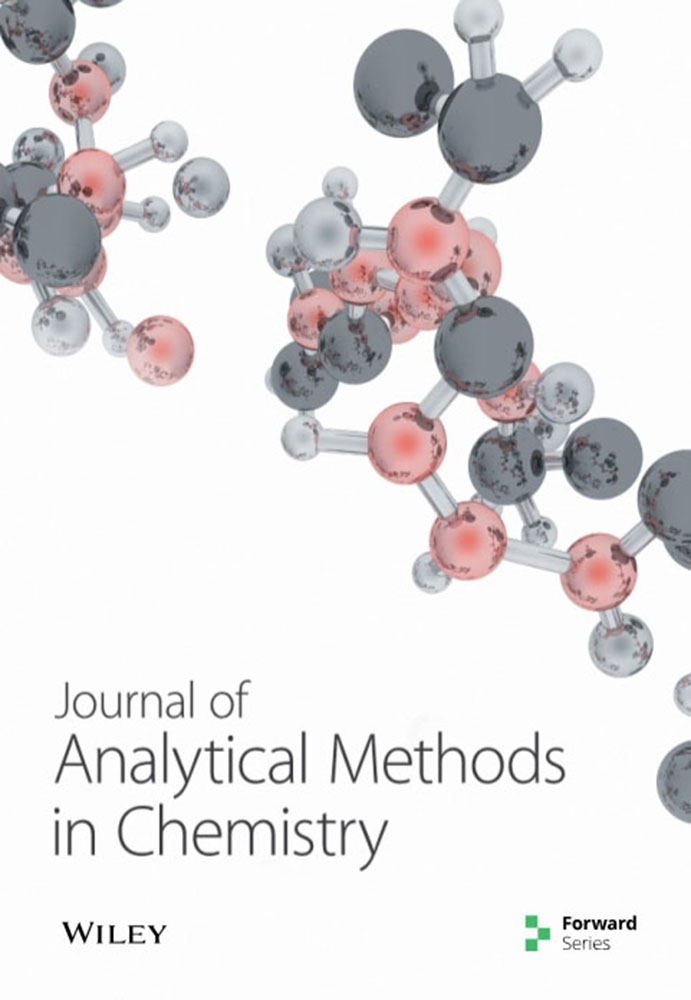高效Z-Scheme γ-Fe2O3/g-C3N4复合材料上CO2光还原成CH4的研究
IF 2.3
3区 化学
Q3 CHEMISTRY, ANALYTICAL
引用次数: 3
摘要
采用煅烧和沉淀浸渍法制备了一系列γ-Fe2O3/g-C3N4复合材料(记为xFeCN, x分别为γ-Fe2O3的5、10、15和20)。x射线衍射(XRD)、傅立叶变换红外(FTIR)和x射线光电子能谱(XPS)表征表明Z-scheme FeCN复合材料的成功合成。紫外-可见漫反射光谱(UV-DRS)显示了光吸收区的红移。此外,光致发光光谱(PL)表明,合成的复合材料中存在Fe2O3和g-C3N4两相的界面相互作用,提高了电荷转移能力。研究了这些材料在气相以H2O为还原剂光还原CO2时的光催化活性。与未掺杂的g-C3N4相比,复合材料具有优异的光活性。10FeCN和15FeCN复合材料(分别为2.8 × 10−2和2.9 × 10−2 μmol h−1 g−1)的CH4产率比原始g- c3n4 (0.4 × 10−2 μmol h−1 g−1)的CH4产率高约7倍。这些复合材料具有优异的光催化性能,其原因是由于其z型结构的光吸收扩展和防止光生电子-空穴对复合。本文章由计算机程序翻译,如有差异,请以英文原文为准。
Photoreduction of CO2 to CH4 over Efficient Z-Scheme γ-Fe2O3/g-C3N4 Composites
A series of composite γ-Fe2O3/g-C3N4 (denoted as xFeCN with x equal 5, 10, 15, and 20 of γ-Fe2O3 percentage in weight) was prepared by calcination and precipitation-impregnation methods. X-ray diffraction (XRD), Fourier transform infrared (FTIR), and X-ray photoelectron spectrometry (XPS) characterizations indicated the successful synthesis of Z-scheme FeCN composites. A red shift of the light absorption region was revealed by UV-vis diffuse reflectance spectroscopy (UV-DRS). In addition, photoluminescence spectroscopy (PL) spectra showed an interface interaction of two phases Fe2O3 and g-C3N4 in the synthesized composites that improved the charge transfer capacity. The photocatalytic activity of these materials was studied in the photoreduction of CO2 with H2O as the reductant in the gaseous phase. The composites exhibited excellent photoactivity compared to undoped g-C3N4. The CH4 production rate over 10FeCN and 15FeCN composites (2.8 × 10−2 and 2.9 × 10−2 μmol h−1 g−1, respectively) was ca. 7 times higher than that over pristine g-C3N4 (0.4 × 10−2 μmol h−1 g−1). This outstanding photocatalytic property of these composites was explained by the light absorption expansion and the prevention of photogenerated electron-hole pairs recombination due to its Z-scheme structure.
求助全文
通过发布文献求助,成功后即可免费获取论文全文。
去求助
来源期刊

Journal of Analytical Methods in Chemistry
CHEMISTRY, ANALYTICAL-ENGINEERING, CIVIL
CiteScore
4.80
自引率
3.80%
发文量
79
审稿时长
6-12 weeks
期刊介绍:
Journal of Analytical Methods in Chemistry publishes papers reporting methods and instrumentation for chemical analysis, and their application to real-world problems. Articles may be either practical or theoretical.
Subject areas include (but are by no means limited to):
Separation
Spectroscopy
Mass spectrometry
Chromatography
Analytical Sample Preparation
Electrochemical analysis
Hyphenated techniques
Data processing
As well as original research, Journal of Analytical Methods in Chemistry also publishes focused review articles that examine the state of the art, identify emerging trends, and suggest future directions for developing fields.
 求助内容:
求助内容: 应助结果提醒方式:
应助结果提醒方式:


